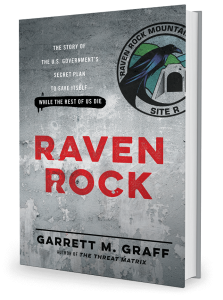Below is the text of my monthly “Editor’s Letter” in the new issue of Washingtonian.
—-
There’s almost no thornier problem lingering from 9/11 than the detainees at Guantánamo Bay, the guilty and innocent who were snatched up from the streets of countries like Bosnia and Pakistan in the chaotic months after the US invasion of Afghanistan.
At its peak, the “Gitmo” camps held more than 500 detainees; today more than 150 remain. Just in recent weeks, the United States transferred the last three Chinese Uighurs held at Gitmo to Slovakia, nearly a decade after determining that the members of the persecuted religious minority had no terrorist ties. Two Algerians were transferred to their home country against their wishes after the government dismissed their claims that they’d be tortured on their return.
Some four dozen of the remaining detainees have been designated as requiring “indefinite detention” because they’re too dangerous to release and their cases are too complicated or tainted to be tried in court.
But no one at Guantánamo is more evil—unapologetically so—than Khalid Sheikh Mohammed, mastermind of the 9/11 attacks.
KSM, as he’s known in government circles, has a long history with al-Qaeda. His nephew, Ramzi Yousef, planned the first World Trade Center bombing in 1993, and as al-Qaeda’s operational chief, KSM himself planned the 9/11 attacks from, as he has claimed, “A to Z.” He was the second-most wanted man in the world, after only Osama bin Laden, when Pakistani and US forces captured him in March 2003 in Rawalpindi. He was held in a CIA black site for years, faced the worst of the CIA’s “enhanced interrogations,” including 183 waterboardings during which he would hold his arm out and tick off the seconds during the procedure to mock his interrogators.
On September 4, 2006, the US transferred KSM from a CIA prison to Guantánamo, where he has sat ever since as the slow wheels of Gitmo justice turned. A brief attempt by US attorney general Eric Holder to try him in New York was scuttled after political outrage.
Finally, in the past two years, the military tribunal has begun work that will try him in Cuba for the attacks—an effort expected to stretch out at least another decade. For the families haunted by 9/11, it’s small comfort.
But to journalist Asra Q. Nomani, KSM is more than just the monster who worked with Mohammed Atta to plan the attacks on the Twin Towers, the Pentagon, and Flight 93. He’s the brutal murderer who, 12 years ago this month, killed her friend, Wall Street Journal reporter Daniel Pearl—a crime for which KSM is unlikely ever to face justice because the US government has decided that despite his admissions of guilt, he won’t be charged.
We first wrote about Nomani six years ago, when she landed in Washington to launch an investigative-reporting course at Georgetown University called the Pearl Project. With journalism director Barbara Feinman Todd and a team of students, she spent years tracing her friend’s murder.
Last spring, after the project completed its work and Nomani found herself still unable to escape the long shadows of the night Danny disappeared from her house in Karachi, she traveled to Guantánamo to see KSM face to face, in one of his only public appearances since his capture.
Her article, which begins on page 42, is a powerful testimonial to Danny Pearl, 20 years in the making. Their friendship began in the Journal’s Washington bureau, where she, Pearl, and Jill Abramson—now executive editor of the New York Times—decorated their cubicles with Happy Meal toys from McDonald’s.
Danny will never finish the story he set out to write on the night of January 23, 2002, when he left Nomani’s home, waving goodbye to her and his wife, Mariane. Now Asra has tried to finish it for him.



Recent Comments